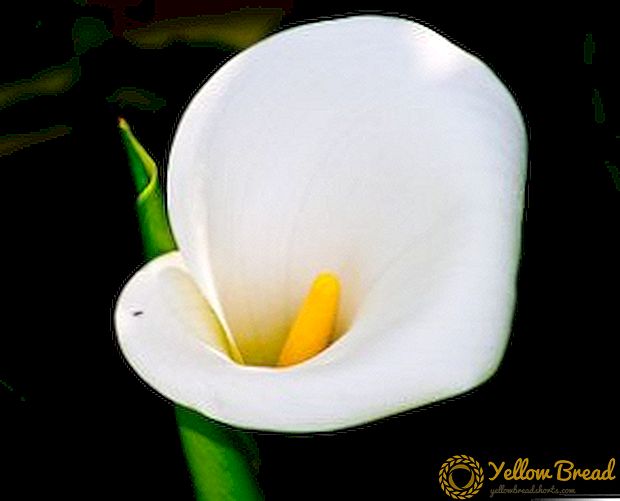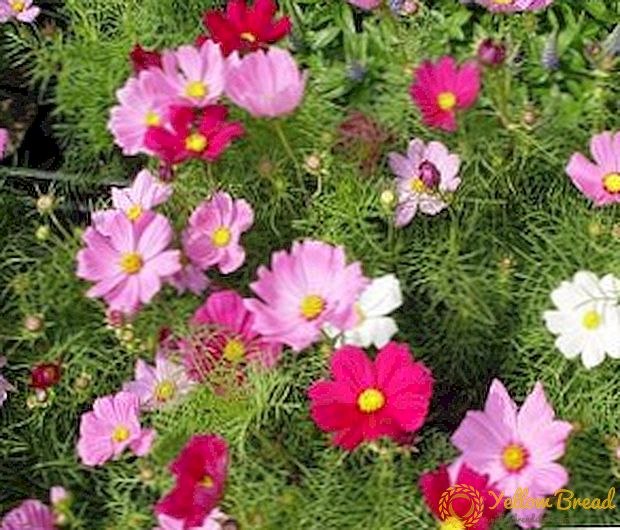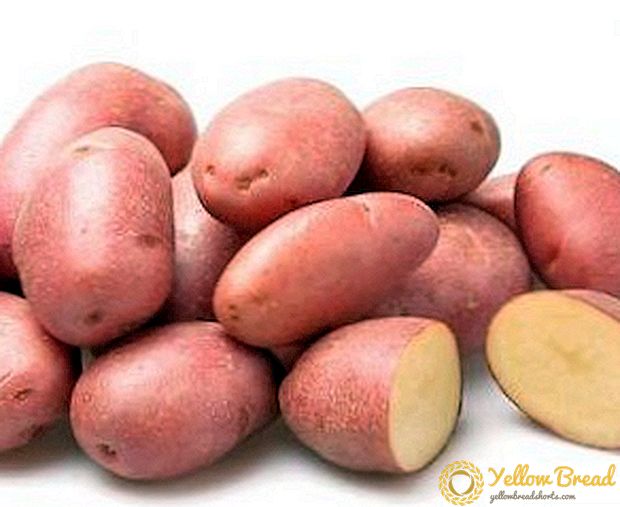 Strawberry is one of the favorite delicacies of the hot summer, it needs constant care and fertilizer. But not all gardeners have the opportunity to buy fertilizer for strawberries, and you have to get out with the help of popular proven recipes. This article describes the best folk remedies for a good crop of strawberries.
Strawberry is one of the favorite delicacies of the hot summer, it needs constant care and fertilizer. But not all gardeners have the opportunity to buy fertilizer for strawberries, and you have to get out with the help of popular proven recipes. This article describes the best folk remedies for a good crop of strawberries.
- Features feeding strawberries in spring
- Folk remedies
- Feeding with mullein
- Chicken litter
- Use of humus
- Fertilizer nettle and other plants
- Bread as a fertilizer for strawberries
- Top dressing with ashes
- Yeast dressing
- Fermented milk dressing
- What is better: mineral or organic fertilizers
Features feeding strawberries in spring
Strawberry is a very responsive plant and is especially in need of fertilizer in the spring when it starts growing. Among the important features of feeding strawberries in the spring are the following:
- We begin to make fertilizer in the first half of April, when the threat of strong spring frosts has passed. If you make a fertilizer earlier, then the strawberries will actively grow and disappear at the first frost.
- Before making it necessary to sanitize the bushes and the area on which they grow.After the snow melts, we remove the insulation, old mulch, leaves and all the garbage that could appear on the site during the winter. We cut off old dried leaves and antennae of strawberries to the root.
- We soil the soil on the site and, especially, under the bushes to a depth of 5-8 cm. We leave the root neck from which all the processes go, 0.5 cm above the ground level in order to prevent it from rotting out and rotting.
- Together with the first fertilizing, you can use the means for the prevention of diseases and against insects - strawberry lovers: ants, Maybirds, strawberry mites, slugs, etc. Here Fitoverm, Acrofit or Fitosporin will do.
- We water the bushes with liquid fertilizers, and dry ones are brought under the bush and around it within a radius of 5-7 cm, mixing with the ground to a depth of 8 cm. After immediately pouring plenty of water on it.
- You can fertilize foliar way, sprinkling the plant from the spray. But here it is important to know that the active substances, such as calcium, copper, iron and boron, are slowly absorbed and go a long way to the root. Therefore it is necessary to spray plentifully and carefully, not leaving empty places. The procedure is carried out in windless dry weather in the evening.
- Repair strawberry needs feeding every 1-2 weeks.

Folk remedies
After carrying out all the necessary procedures from item 1, we choose the most suitable means for ourselves and proceed to fertilizing.
Feeding with mullein
Korovyak is one of the best universal fertilizers for strawberries, increasing crop yield by 40-50%. It contains all the micro and macro elements needed by the plant: magnesium, calcium, potassium, phosphorus and nitrogen, and in a small amount also copper, zinc, cobalt, boron and molybdenum. Korovyak is good because the release of these substances occurs gradually, and the effect of fertilizer persists for a long time.
There are 4 types of mullein:
- Litter mullein - It is a mixture of cattle excrement with hay or straw, which was litter in them. It is rich in potassium and phosphorus and is ideal for creating compost and fertilizing the site in the fall.
- Undepleted mullein - liquid concentrate of medium density, rich in nitrogen, which is 50-70% of the total mass. Best suited for the manufacture of liquid mullein, for watering garden crops and trees.
- Manure liquid is a concentrated fertilizer saturated with nitrogen and potassium. It is subject to compulsory dilution with water and is used only in the fermented state.
- Cow Mullein it is mined industrially, is sold in bottles of different displacement or in the form of a dry powder for dilution with water.
 For strawberries, a rotted mullein is best suited for processing strawberries twice in spring, diluting it with water at a ratio of 1:15:
For strawberries, a rotted mullein is best suited for processing strawberries twice in spring, diluting it with water at a ratio of 1:15:- At the beginning of the growing season plants with the addition of 0.25 Art. urea and 0.5 tbsp. ash;
- During flowering or budding.
Chicken litter
Chicken dung - very rich and caustic fertilizer, with a huge nitrogen content. Top dressing is made at the beginning of the development of the plant, since when fertilizer is late, you can get a small crop with a small size of strawberries.
There are three types of chicken manure:
- Liquid solution Make 1 part of chicken manure and 30-40 parts of water. Pour over this mixture of strawberry row spacing.
- Dry droppings it is brought, as a rule, in the fall, but is scattered in a thin and uniform layer, thoroughly mixed with sand or peat.
- Granulated Chicken Dung - The most convenient way to fertilize strawberries, because it has no unpleasant smell and is easy to use. It is enough to scatter 200-300 g of pellets per 1 m² plot, preventing them from contact with strawberry bushes. Best used on well-moistened soil or after rain.
 For the preparation of liquid fertilizer solution on a bucket of warm distilled water, 500-600 g of chicken manure is sufficient. Stir the mixture thoroughly and pour into a watering can. Water the strawberry aisles no closer than 5-6 cm to the bushes. Fertilizer consumption - an average of 12 liters per 15-20 bushes. After you need to water the bushes with clean water to avoid contact with the leaves and stems.
For the preparation of liquid fertilizer solution on a bucket of warm distilled water, 500-600 g of chicken manure is sufficient. Stir the mixture thoroughly and pour into a watering can. Water the strawberry aisles no closer than 5-6 cm to the bushes. Fertilizer consumption - an average of 12 liters per 15-20 bushes. After you need to water the bushes with clean water to avoid contact with the leaves and stems.Use of humus
Humus is obtained from a mixture of livestock waste products along with straw or dry grass, which were used as bedding. Rich in trace elements such as calcium, magnesium, potassium, nitrogen and phosphorus. It is introduced in early spring at the beginning of the growing season, during loosening of the soil under the strawberries.
It is important to correctly make a liquid solution of humus for the best effect and high yield. To do this, we dilute 2.5 kg of manure in 8 liters of clean distilled water in a bucket, and mix thoroughly. This solution should be drawn for 2-3 days in a warm place, so that ammonia and uric acid can come out of it.
But for fertilizer this solution is highly concentrated, and it must be diluted again with water. To do this, we take 1 part of the solution for 4-5 l of water, and already with this mixture we water strawberry bushes at the rate of 10 l per 1 m² of land.
Fertilizer nettle and other plants
The use of fertilizers from nettle and other plants can be called a real healing elixir for strawberries. Nettle can be found at each site and its collection will not take a lot of effort and time. It contains 35% potassium, 40% calcium, 6% magnesium, and Vitamin K1, which is so important for strawberries, which enhances the photosynthesis of the plant and heals it in a comprehensive manner.
With proper preparation, you get high-quality budget fertilizer:
- it is necessary to collect nettles before the appearance of seeds in it;
- it is important to choose healthy plants without damage;
- Nettle finely cut and fill with a bucket of clean warm water;
- the solution is drawn into the sun or in a warm place to speed up the digestion process;
- 2 times a day you need to mix the infusion;
- pure infusion is concentrated and diluted before feeding with water at a ratio of 1:10;
- fertilizer is applied from the beginning of the growing season 2 times a month;
- after each feeding the plot with strawberries is poured abundantly with water.
Bread as a fertilizer for strawberries
Dried bread is perfect as a strawberry feed, as it responds very positively to the feeding with yeast. This fertilizer:
- is a natural growth stimulant;
- increases the survival and immunity of the plant, which is especially important in adverse growing conditions or on poor soil fertilizers;
- strengthens the root system of the plant;
- increases the resistance of strawberries to diseases.
 Bread and crackers break into pieces about 2 cm and are poured with water in a bucket or barrel, completely covering the bread. It is necessary to cover this composition with a lid so that the bread does not pop up, and put it for 1-2 weeks in a warm dark place for fermentation.
Bread and crackers break into pieces about 2 cm and are poured with water in a bucket or barrel, completely covering the bread. It is necessary to cover this composition with a lid so that the bread does not pop up, and put it for 1-2 weeks in a warm dark place for fermentation.The solution is quite concentrated and diluted with a dilution of 1:10 before feeding. Pour strawberry bushes with this mixture, pouring a small amount under the root.
Top dressing with ashes
Wood ash is one of the most popular and easy-to-use fertilizers for strawberries in gardeners. It is rich in potassium, phosphorus, lime and a whole number of trace elements necessary for the plant, which make the berries much sweeter and increase their storage time.
There are 2 ways to use wood ash:
- During loosening and mulching the aisle sprinkled with a thin layer of ash and watered abundantly with water.
- In a liquid form, a glass of ash is diluted with 1 l of hot water and put in a warm place for the night. The next day, it is diluted in a bucket of water and the bushes at the rate of 1 l per 1 m² are watered with this solution.
Yeast dressing
The principle of the yeast top dressing is the same as that of the bread one; only the cooking method:
- A pack of live yeast 1 kg diluted with 5 liters of warm water and mix thoroughly. Now once again dilute with water in a ratio of 0.5 liters of concentrated infusion to 10 liters of water.
- Quick dry yeast diluted with a small amount of warm water with the addition of 2 tablespoons of sugar and mix well. Next, dilute the mixture with 10 liters of water, and you can already begin to water the bushes at the root.
Fermented milk dressing
This folk fertilizer is based on the fact that strawberries prefer slightly acidic soil, and it makes the soil exactly like that, plus it contains a huge amount of vitamins such as sulfur, nitrogen, calcium, phosphorus and a whole range of essential amino acids. Often, serum is used for this purpose, which is diluted with water in proportions of 1:10 and watered under a bush.
Strawberries will positively respond to foliar feeding with this agent as a good prophylactic against fungi and other diseases.
Best of all fermented milk fertilizer is paired with manure, mullein or chicken droppings.
What is better: mineral or organic fertilizers
The debate over the best fertilizer for strawberries — mineral or organic — is still being waged by gardeners and scientists. After all, each of them has its pros and cons: Organic fertilizers:
Organic fertilizers:
- have a long life and decompose to simple elements for a year or more;
- improve the structure of the soil, increasing the level of humus in it;
- in the composition have microorganisms and bacteria that naturally heal the soil;
- but with an increase in the required plant dose, the level of nitrates in the plant and in its fruits increases.
- undergo a rapid process of mineralization and absorption by plants;
- easy to use;
- it is possible to choose a complex with a lack of one element in the soil;
- do not affect the mechanical composition of the soil;
- but with increasing concentration can greatly harm the strawberries and the site as a whole;
- quickly washed out of the soil.
Now you know when and how to fertilize strawberries in the spring, and only the quality and quantity of the harvest of such a tasty berry depends on your choice and the right approach to fertilizing the crop.






